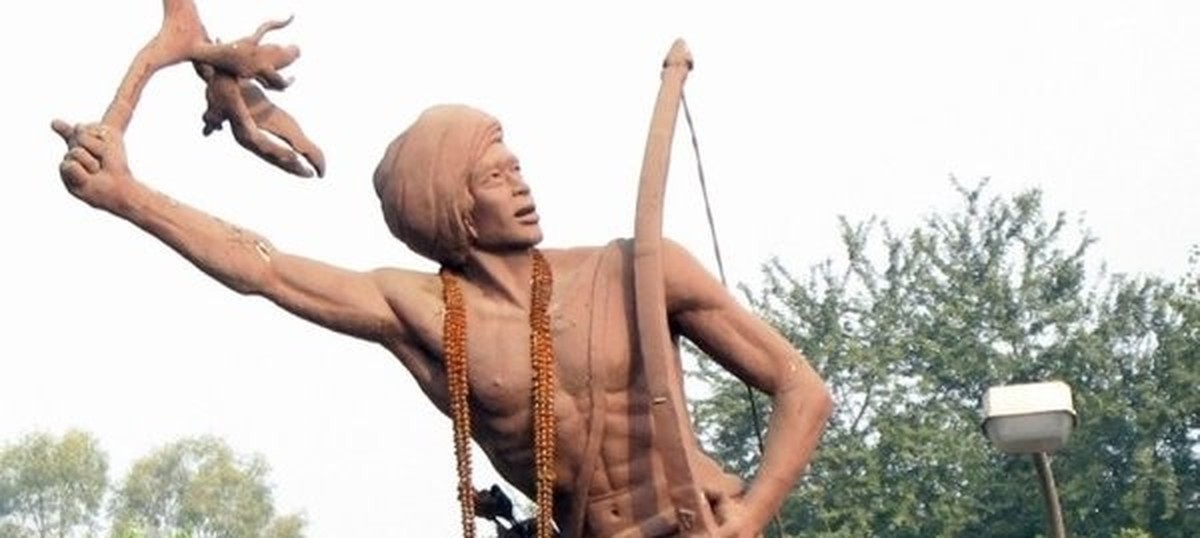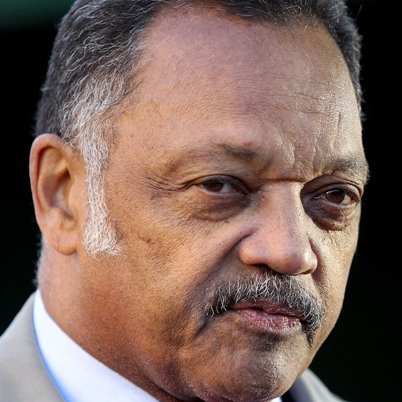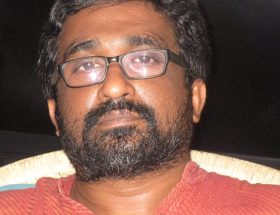BAPSA
JNU, New Delhi

Remembering Dharti Aba Birsa Munda on 15th Nov
Remembering the Foundation Day of BAPSA
Intensifying Struggle of Justice for Najeeb
The class was going on as usual in the German Mission School at Burj, Chaibasa. A teacher named Dr Nottrott repeatedly uttered derogatory words against the Mundas. A boy left the school in protest. His name was Birsa Munda.
Dharti Aba Birsa Munda’s Ulgulan or Call for Revolt is one of the significant Mass Armed Uprisings of Tribals/ Adivasis of central India in mid-1890s against colonialism and feudalism for independence and self-rule like any other Tribal revolt anywhere in the world against oppression.
After the suppression of the first rising, in 1895 the Dharti Aba Birsa gave a clarion call to the Munda communities for a decisive war against the British. After a series of concerted attacks for nearly two years on the places loyal to the British, the Munda warriors started congregating on “Dombari Hill ” in the village “Sail Rakab ” nearly 20 Km from the Ranchi-Jamshedpur Highway. Documents reveal that Birsa Munda was adopting Guerilla warfare, and attacked the British in Ranchi and Khunti. Several British police men were killed and nearly 100 Buildings were set on fire. Being scared of this ” Ulgulan” or revolt, the then commissioner Mr. A. Fobes and Deputy Commissioner Mr. H.C. Streattfield, rushed to Kunti with two companies of army to crush the mass struggle (Ulgulan) of “Abua Disun” (Self- rule). Birsa Munda’s Ulgulan was a socio-cultural-intellectual and political movement that was later followed by the Mass Armed Rebellion against British colonialism as well as Hindu feudal landlordism.
Birsa Munda is the tallest figure of the Tribal revolt in central India against colonialism and feudalism. By the mid nineteenth century, the Hindu landlords had already established their hegemony over Adivasi people of central India with the help of British. For the first time India witnessed a combined revolt by Adivasi of central India against both colonialism and Brahminism. But they had to face an unprecedented revolt of the Adivasi at the end of nineteenth century. When the Adivasi of central India were taking armed revolt against British colonialism for independence and self-Rule, the so called freedom fighters like Gandhi, Nehru, Rabindranath Tagore, Bankim Chandra, Saratchandra and many other savarna Bengali enlightenment thinkers were not even born or were the stooges of British colonialism and Brahminism. Birsa Munda was the face of socio-cultural-intellectual and political movement of Adivasis against all kinds of oppression. It was the same period when central India was also witnessing a strong anti-Brahminical socio-cultural-intellectual movement led by Ghasi Das in Chhattishgarh, Bhim Bhoi in Odisha and Jotirao Phule in Maharastra. One thing that links Birsa Munda with Bhim Bhoi, Ghasi Das and Phule was his socio-cultural-intellectual movement against the Religious cultural hegemony of the oppressors. He envisaged a radical political programme of independence, both religious and political. He realised that the ideal agrarian order would be possible in a world free from the influence of European officials, missionaries and landlords. Therefore Birsa began his political movements revolting against British missionaries and Brahminism together and reshaped the indigenous Adivasi cult or religion free from superstitions or blind belief. He himself became the prophet of his new religion called “Sarna”. He didn’t write any text for Sarna religion as this movement was an assertion of Adivasi way of life in a newer form known to all. As a result all Adivasi, Mundas, Oraon, Kharias and others started calling Birsa as their God or Dharti Aba. This is where Birsa Munda acquaintances with Bhim Bhoi, Ghasi Das, Phule and many other revolutionaries who understood the necessity of creating counter culture for the oppressed to dissociate from the cultural of hegemony of the oppression.
It’s really disgraceful that the Indian history (written by savarnas) deliberatly ignores the importance of Tribal Munda’s revolt against colonial forces. It also black-outs the other tribal revolts like Kols revolt of 1831-32, Bastar revolt of 1910, Warli revolt of 1940 and many more similar kinds of revolts against British colonialism. But the Indian historians never forget to repeat the significance of Gandhi’s Non-violent struggle ad infinitum and the importance of other savarna militant groups of Bengal and other parts against British. Similarly all the savarna communist parties since the beginning neither recognised the significance of Tribal revolt against colonialism nor provided it a prominent place in their discourse. The Party documents of the savarna communists still bear the testimonies of acknowledging their historical legacy not with the Massive Adivasi Armed Revolt against British colonialism, but with the savarna armed groups of Bengal and other parts. But the Adivasi Movement in central India is forcing many to unearth and acknowledge all the forgotten histories today.
However the RSS, BJP and other Hindutva organisations are carrying out the dangerous project of Hinduizing Adivasis of central India. RSS claims that Birsa Munda revolted against Christian missionaries and not against Hinduism. Last year in 2015 when the people of Jharkhand demanded separate code for Tribals or Sarna, RSS declared that “all Tribals are Hindus, no need of separate code for Tribals.” This is how the RSS is taking its master tactic of oppression through internal fractions among the Adivasi communities.
However, these divide and rule policy of Brahminism is not new. It has a long history of experience and knowledge regarding how to divide the people and oppress them. Brahminism has permanently divided the oppressed through graded inequality of hegemonic Hindu religion where Dalits or Untouchable are at the bottom and the worst victim of Brahminism who are historically oppressed since thousands of years. Therefore creating counter culture against the hegemonic culture of oppressive structure has been the dominant method of Dalit’s age old historical anti-caste, anti-Brahminical movement in India. As the Adivasis of central India have been consistently fighting against oppression before and after the so called independence, Dalits or Untouchables are also fighting against Brahminism or oppression since thousands of years since Budhha to Ambedkar. The on-going Ambedkarite Movement in the country in various forms are the legacy of that historical anti caste, anti-Brahminical, anti- establishment movement that believes in the principle of unity of oppressed to smash feudalism, Brahminism and all other forms of oppression.
It’s in this context that BAPSA is a small reflection of that historical anti-caste, anti-Brahminical movement in campus. It was formed on Nov 15th, 2014 on the Birth Anniversary Birsa Munda. Within a very short span of two years, BAPSA has significantly changed the campus discourse and students’ movements and politics. BAPSA is the organisation of all the oppressed sections of the society which is trying to unite them for a united struggle against the onslaught of Brahminism or Capitalism. Along with Adivasi and Dalits, today Brahminism has created new enemies as a reaction to counter and check the internal blasting of its own house. Those are mainly Muslims and other religious minorities and nationalities. Muslims are intimidated, targeted and lynched every day like Dalit and Adivasi by the Brahminical forces. Muslims as a community are subjected to social degradation like Dalits and Adivasi and are being branded as anti-nationals, terrorists and outsiders. The nation has already witnessed several public massacres of religious minorities. Sikh Massacre of 1984, Gujarat Genocide of Muslim and Kandhmal pogrom of Christians (mostly Tribals and Dalits) are some well-known Terrorism of Hindutva politics (Brahminism). However the politics of Hindutva should not be seen out of context as if it emerged out of blue. The Hindutva has a history and a context, so do the minorities have their own history and context who are organically linked with historical struggle against Brahminism.
Beside these three major ostracized communities, there is a vast population of socially economically oppressed, workers, women and other marginalised who have been historically subjugated and are facing today the brutal onslaught of Hindutva fascism. In such a context, we have seen a communal attack on Najeeb by the ABVP goons inside the campus and he is missing since the last 30 days. We have also seen the complete failure of the degenerated AISA-SFI led JNUSU in dealing the case of Najeeb. It’s really shame for the campus politics that the ABVP culprits are roaming free with impunity after group violence on Najeeb. After the withdrawal of the Admin Blockade abruptly, JNUSU has done nothing to force Admin to take action against the culprits except some damage management programmes to confuse the student community. It’s the height of compromise, hypocrisy and a mockery of the so called left progressive politics in the campus. BAPSA strongly appeals to JNUSU to take a strong move to force the Admin to take action against the ABVP culprits.
Finally on the Birth Anniversary of Dharti Aba Birsa Munda and the Foundation Day of BAPSA, we would like to reiterate that the struggle against Brahminical Fascist forces demands the strong unity of all oppressed and the unity can be materialised only after the conscious realization of the importance of unity, not by one or two but by all oppressed communities together abolishing their social hierarchies and its mental complexities. Unity mustn’t be the burden of those who are at the bottom.
British left India long back, but the Indian Hindus Brahminical money lender, middle man, contractors, corporate didn’t leave Adivasi, Dalit and other oppressed. Adivasi are looted and lynched each and every day in the central India. They are being forcefully displaced and their natural resources were looted in the name of development. Adivasi sacrificed their lives fighting against British before independence, now their lives are sacrificed by the state for the development of the “nation” by the government.
However as the oppression continues, the struggle also continues. The struggle of Birsa Munda, Bhim Bhoi, Ghasi Das, Phule, Periyar, Ambedkar… against inequality and oppression continues. It continues in various forms consolidating the past and present, uniting all struggling people and it will go until the oppression ends. Till then the Ulgulan continues…
[Via Bhupali Kusum Vitthal]
~~~









